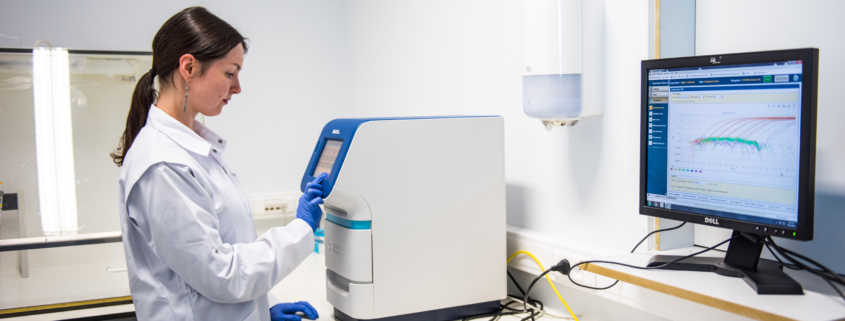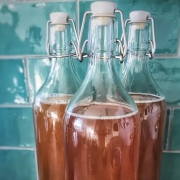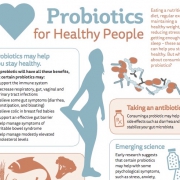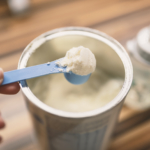Can the microbiota help protect against viral infections? Summary of an ISAPP discussion group
By Drs. Karen Scott, University of Aberdeen, and Sarah Lebeer, University of Antwerp
As part of the ISAPP virtual annual meeting 2020, around 85 members of the ISAPP community joined us in a Zoom discussion forum to discuss the topic: “Do our resident microbes help protect against viral infections?” A scientific perspective on this topic is especially important during the COVID-19 pandemic, when many members of the general public are wondering about actions (if any) they can take to protect themselves before a SARS-CoV-2 vaccine becomes widely available.
We introduced the topic and were joined by several invited experts, who also gave short presentations:
- Joel Dore (INRAE France)
- Tine Licht (Technical University of Denmark)
- Mary O’Connell-Motherway (APC Microbiome, Cork)
The ensuing conversation, open to all participants, was wide-ranging, starting with the gut microbiota and expanding to include the microbiota at other body sites, and the effects of the gut microbiota around the body gut via transport of metabolites. Here are some of the main take-home messages from this discussion.
Components of the microbiota (bacteria, fungi, archaea, viruses and others) at a body site interact with each other. Although scientists often study one component of the (gut) microbiota at a time, members of the microbiota from different kingdoms interact with each other in ways that can be positive or negative for the host. In particular, specific activities of bacteria can be widespread, frequent or rare among members of the microbiota – and it is often the rare activities that have important impacts on the course of a disease: e.g. specific antimicrobial agents produced by some bacteria prevent Salmonella infections in pigs and cure mastitis in cows.
Mechanistic work shows bacteria in the microbiota can prevent, eliminate or promote viral infections. Studies have shown some microbes can prevent attachment of viruses to cell surfaces by offering alternative receptors. In contrast, virus particles can utilise other bacterial cells to “mask” them and facilitate entry into host cells. Other bacteria can stimulate the immune system to promote elimination of a viral infection, while under specific circumstances this same immune activation may promote viral infection. When it comes to the microbiota of the respiratory tract, studies have shown its bacterial members play a crucial defensive role. Probiotics that are already shown to be effective against other viral upper respiratory tract infections may have promise for COVID-19 (either for preventing infection or enhancing recovery), and currently studies are underway to investigate these.
Probiotics or prebiotics could be useful adjuncts to vaccination, but they are not likely to become a reality for COVID-19. Scientists are perennially interested in the topic of vaccine efficacy, and some probiotics have been shown to increase efficacy for widely available vaccines in certain populations. But in the current pandemic, developing a safe and effective vaccine (or vaccines) is the primary concern. Testing the possibility of probiotic or prebiotic combination therapies would be secondary, since the necessary testing would take longer in order to evaluate the adjuvant potential of different probiotic strains. Because the expression of cell surface molecules that can mediate adjuvant activity is strain-dependent, screening and selecting the best strains would probably take too long to become a reality for COVID-19. Certainly, participants agreed that introduction of a safe, effective vaccine was the priority, without any delays to test out ‘extras’.
A scientific rationale exists for maintaining gut microbiota diversity in order to reduce the development of diseases which, as “underlying health conditions”, may result in more severe COVID-19 outcomes. It is clear that individuals with certain underlying health conditions—related to the central nervous system and gastrointestinal system, and to metabolic and immunological dysfunction—tend to experience a more severe disease, with worse outcomes, following SARS-CoV-2 infection. Many of these conditions are also associated with a gut microbiota that is different from that of healthy controls. Research consistently shows that individuals with metabolic disease, for example, have a less diverse, lower ‘richness’ microbiota, which is often linked to increased intestinal permeability, higher gut inflammation and more oxidative stress throughout the body. This increased oxidative stress then exacerbates the microbial dysbiosis, causing more inflammation and increased intestinal permeability – creating a vicious cycle effect. This cycle is linked with obesity and metabolic disorders. In healthy individuals who are at risk of developing such conditions, the diversity of the existing resident microbiota may be increased by the application of prebiotics or synbiotics, included within a healthy, diverse, high-fibre diet. These approaches may improve bacterial fermentation in the large intestine, resulting in increased production of important bacterial metabolites that help regulate host metabolism, including short-chain fatty acids.
Until a SARS-CoV-2 vaccine is available, supporting a diverse and complex gut microbiota through diet may contribute to maintaining health in at-risk populations. Despite the intense worldwide scientific efforts and collaborations, it is unlikely that an effective vaccine against COVID-19 will be widely available soon. In the meantime, we have to protect ourselves and our local ‘at-risk’ populations as best we can. We are learning more and more about the mechanisms of dietary fibre’s health effects, in which gut bacteria play a major role. Evidence suggests that keeping our gut microbiota as complex and diverse as possible by consuming a high-fibre diet (supplemented by fermented foods, probiotics and prebiotics) might help mitigate susceptibility to infections in general.















